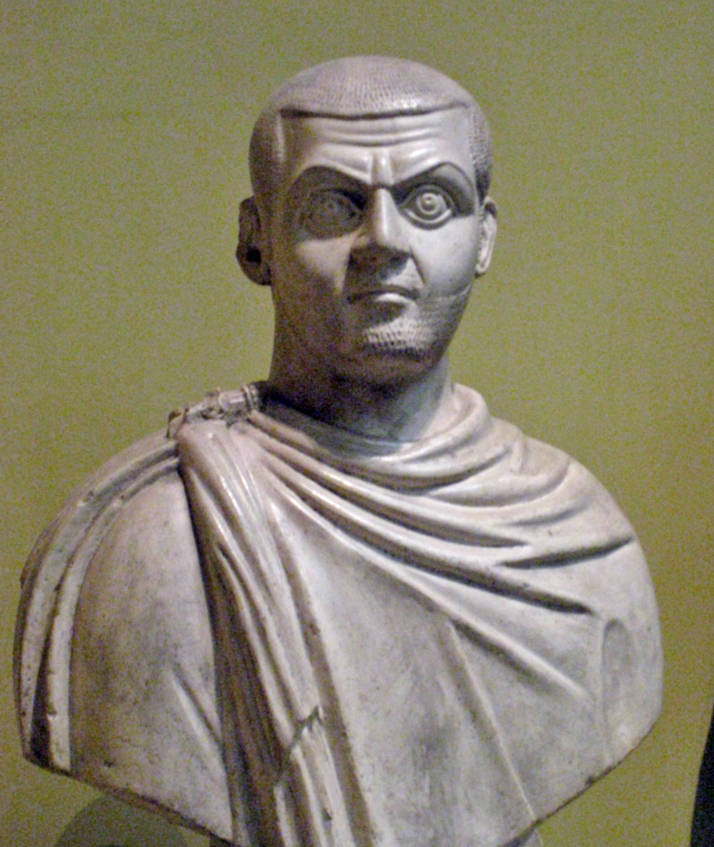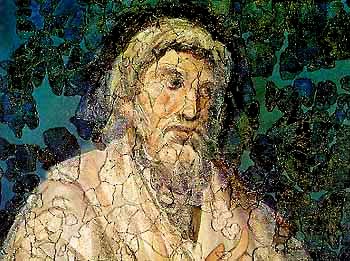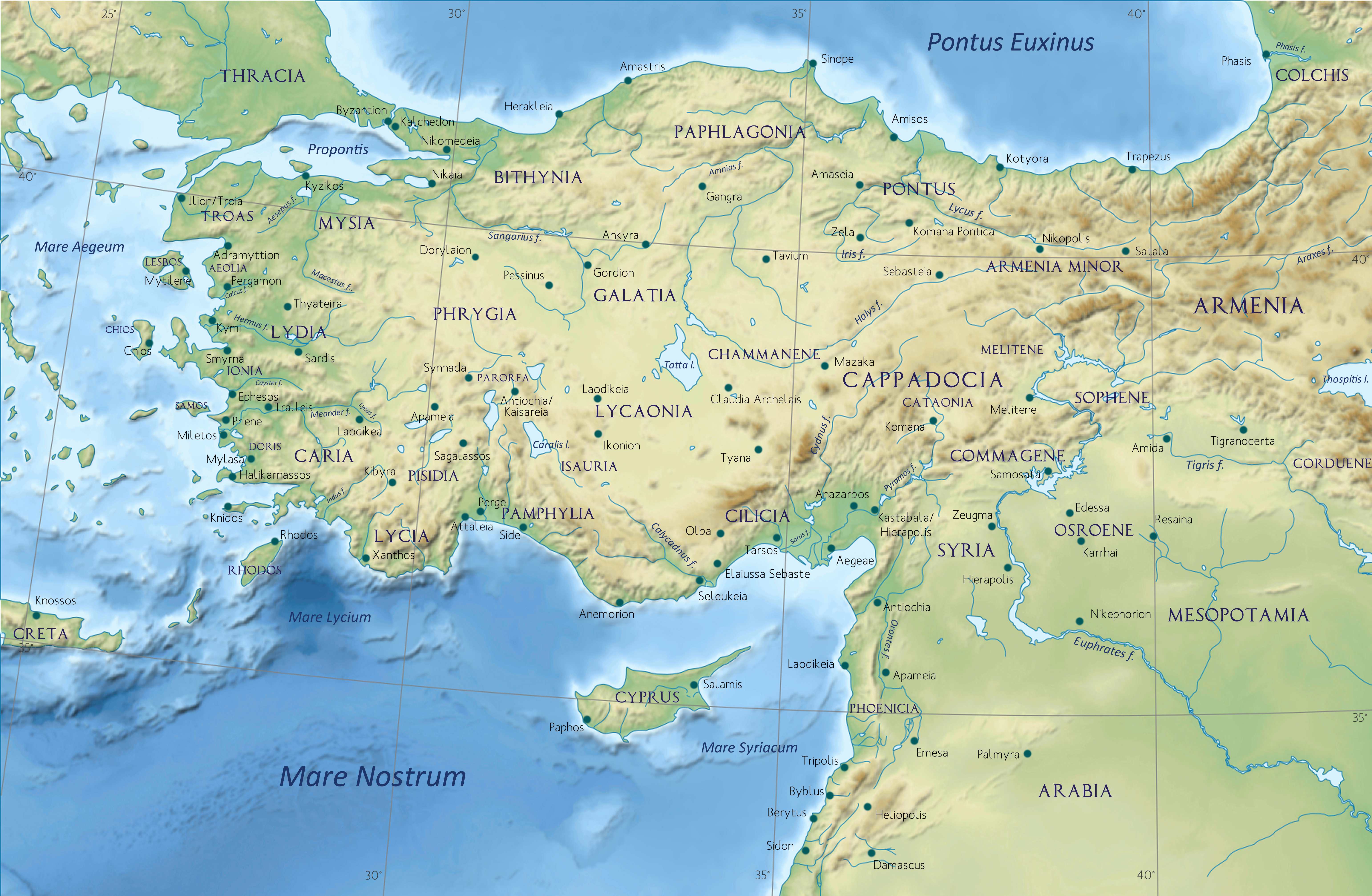|
Flavius Severianus
Flavius Severianus (died 313) was the son of the Roman Emperor Flavius Valerius Severus. Life and execution After his father died in 307 in Italy having surrendered to his rivals Maximian and Maxentius, Severus' young son Flavius Severianus sought refuge in the Eastern part of the empire under Galerius. When Galerius died in 311, Severianus suspected that Licinius intended to do him harm as a potential rival in his ambitions to rule the East and so he fled to Maximinus Daza in Asia who made him ''praeses'' (governor) of the province of Isauria. In August 313 Maximinus Daza went to war against Licinius. Severianus accompanied him on this campaign which ended in defeat for Daza. Severianus was captured following the death of Daza, and Licinius had him executed under the pretense that Severianus intended to assume the imperial office himself. [...More Info...] [...Related Items...] OR: [Wikipedia] [Google] [Baidu] |
Flavius Valerius Severus
Flavius Valerius Severus (died September 307), also called Severus II, was a Roman emperor from 306 to 307. After failing to besiege Rome, he fled to Ravenna. It is thought that he was killed there or executed near Rome. Background and early career Severus was of humble birth, born in Northern Illyria around the middle of the third century. A friend of emperor Galerius, he rose to become a senior officer in the Roman army, being nominated as ''Caesar (title), caesar'' of the Western Roman Empire. According to Lactantius, Diocletian objected to Galerius's suggestion, saying in response, "What! That dancer, that habitual drunkard who turns night into day and day into night?" Galerius persisted, saying that Severus has served faithfully as paymaster and purveyor of the army.Lactantius (4th century). Lord Hailes (transl.) (2021) On the Deaths of the Persecutors'. Evolution Publishing, Merchantville, NJ , pp. 31-47 Diocletian acquiesced and Severus succeeded to the post of ''caesa ... [...More Info...] [...Related Items...] OR: [Wikipedia] [Google] [Baidu] |
313 Deaths
__NOTOC__ Year 313 ( CCCXIII) was a common year starting on Thursday (link will display the full calendar) of the Julian calendar. At the time, it was known as the Year of the Consulship of Constantinus and Licinianus (or, less frequently, year 1066 ''Ab urbe condita''). The denomination 313 for this year has been used since the early medieval period, when the Anno Domini calendar era became the prevalent method in Europe for naming years. This year is notable for ending of the persecution of Christians in the Roman Empire. Events By place Roman Empire * At the end of 312 or in early 313, the retired Emperor Diocletian dies in his palace in Split, most likely from natural causes. * February: Emperors Constantine I and Licinius convene in Mediolanum (modern Milan). Licinius marries Constantine's half-sister Constantia, and they issue the Edict of Milan. This edict ends the Great Persecution against the Christians and is the first piece of legislation in western his ... [...More Info...] [...Related Items...] OR: [Wikipedia] [Google] [Baidu] |
Executed Ancient Roman People
Capital punishment, also known as the death penalty, is the state-sanctioned practice of deliberately killing a person as a punishment for an actual or supposed crime, usually following an authorized, rule-governed process to conclude that the person is responsible for violating norms that warrant said punishment. The sentence ordering that an offender is to be punished in such a manner is known as a death sentence, and the act of carrying out the sentence is known as an execution. A prisoner who has been sentenced to death and awaits execution is ''condemned'' and is commonly referred to as being "on death row". Crimes that are punishable by death are known as ''capital crimes'', ''capital offences'', or ''capital felonies'', and vary depending on the jurisdiction, but commonly include serious crimes against the person, such as murder, mass murder, aggravated cases of rape (often including child sexual abuse), terrorism, aircraft hijacking, war crimes, crimes against ... [...More Info...] [...Related Items...] OR: [Wikipedia] [Google] [Baidu] |
People Executed By The Roman Empire
A person ( : people) is a being that has certain capacities or attributes such as reason, morality, consciousness or self-consciousness, and being a part of a culturally established form of social relations such as kinship, ownership of property, or legal responsibility. The defining features of personhood and, consequently, what makes a person count as a person, differ widely among cultures and contexts. In addition to the question of personhood, of what makes a being count as a person to begin with, there are further questions about personal identity and self: both about what makes any particular person that particular person instead of another, and about what makes a person at one time the same person as they were or will be at another time despite any intervening changes. The plural form "people" is often used to refer to an entire nation or ethnic group (as in "a people"), and this was the original meaning of the word; it subsequently acquired its use as a plural form of ... [...More Info...] [...Related Items...] OR: [Wikipedia] [Google] [Baidu] |
Valerii
The gens Valeria was a patrician family at ancient Rome, prominent from the very beginning of the Republic to the latest period of the Empire. Publius Valerius Poplicola was one of the consuls in 509 BC, the year that saw the overthrow of the Tarquins, and the members of his family were among the most celebrated statesmen and generals at the beginning of the Republic. Over the next ten centuries, few gentes produced as many distinguished men, and at every period the name of ''Valerius'' was constantly to be found in the lists of annual magistrates, and held in the highest honour. Several of the emperors claimed descent from the Valerii, whose name they bore as part of their official nomenclature.''Dictionary of Greek and Roman Biography and Mythology'', vol. III, pp. 1215, 1216 (" Valeria Gens"). A number of unusual privileges attached to this family, including the right to burial within the city walls, and a special place for its members in the Circus Maximus, where the ... [...More Info...] [...Related Items...] OR: [Wikipedia] [Google] [Baidu] |
Flavii
The gens Flavia was a plebeian family at ancient Rome. Its members are first mentioned during the last three centuries of the Republic. The first of the Flavii to achieve prominence was Marcus Flavius, tribune of the plebs in 327 and 323 BC; however, no Flavius attained the consulship until Gaius Flavius Fimbria in 104 BC. The gens became illustrious during the first century AD, when the family of the Flavii Sabini claimed the imperial dignity.''Dictionary of Greek and Roman Biography and Mythology'', vol. II, p. 169 ("Flavia Gens"). Under the Empire, the number of persons bearing this nomen becomes very large, perhaps due to the great number of freedmen under the Flavian dynasty of emperors. It was a common practice for freedmen to assume the nomina of their patrons, and so countless persons who obtained the Roman franchise under the Flavian emperors adopted the name ''Flavius'', which was then handed down to their descendants. During the later period of the Empire, the n ... [...More Info...] [...Related Items...] OR: [Wikipedia] [Google] [Baidu] |
Constantinian Dynasty
The Constantinian dynasty is an informal name for the ruling family of the Roman Empire from Constantius Chlorus (died 306) to the death of Julian in 363. It is named after its most famous member, Constantine the Great, who became the sole ruler of the empire in 324. The dynasty is also called Neo-Flavian because every Constantinian emperor bore the name Flavius, similarly to the rulers of the first Flavian dynasty in the 1st century. Stemmata In ''italics'' the ''augusti'' and the ''augustae''. * '' Constantius I'' *# From relationship between ''Constantius I'' and ''Helena'' *#* '' Constantine I'' *#*# From marriage between ''Constantine I'' and ''Minervina'' *#*#* Crispus *#*# From marriage between ''Constantine I'' and ''Fausta'' *#*#* '' Constantina'', wife of Hannibalianus and Constantius Gallus *#*#* '' Constantine II'' *#*#* ''Constantius II'' *#*#*#No offspring from marriage between ''Constantius II'' and his first wife, daughter of Julius Constantius *#*#*#No offs ... [...More Info...] [...Related Items...] OR: [Wikipedia] [Google] [Baidu] |
4th-century Romans
The 4th century (per the Julian calendar and Anno Domini/Common era) was the time period which lasted from 301 ( CCCI) through 400 ( CD). In the West, the early part of the century was shaped by Constantine the Great, who became the first Roman emperor to adopt Christianity. Gaining sole reign of the empire, he is also noted for re-establishing a single imperial capital, choosing the site of ancient Byzantium in 330 (over the current capitals, which had effectively been changed by Diocletian's reforms to Milan in the West, and Nicomedeia in the East) to build the city soon called Nova Roma (New Rome); it was later renamed Constantinople in his honor. The last emperor to control both the eastern and western halves of the empire was Theodosius I. As the century progressed after his death, it became increasingly apparent that the empire had changed in many ways since the time of Augustus. The two emperor system originally established by Diocletian in the previous century fell in ... [...More Info...] [...Related Items...] OR: [Wikipedia] [Google] [Baidu] |
Lactantius
Lucius Caecilius Firmianus Lactantius (c. 250 – c. 325) was an early Christian author who became an advisor to Roman emperor, Constantine I, guiding his Christian religious policy in its initial stages of emergence, and a tutor to his son Crispus. His most important work is the '' Institutiones Divinae'' ("The Divine Institutes"), an apologetic treatise intended to establish the reasonableness and truth of Christianity to pagan critics. He is best known for his apologetic works, widely read during the Renaissance by humanists, who called Lactantius the "Christian Cicero". Also often attributed to Lactantius is the poem '' The Phoenix'', which is based on the myth of the phoenix from Egypt and Arabia. Though the poem is not clearly Christian in its motifs, modern scholars have found some literary evidence in the text to suggest the author had a Christian interpretation of the eastern myth as a symbol of resurrection. Biography Lactantius was of Punic or Berber origin, b ... [...More Info...] [...Related Items...] OR: [Wikipedia] [Google] [Baidu] |
Maximian
Maximian ( la, Marcus Aurelius Valerius Maximianus; c. 250 – c. July 310), nicknamed ''Herculius'', was Roman emperor from 286 to 305. He was ''Caesar'' from 285 to 286, then '' Augustus'' from 286 to 305. He shared the latter title with his co-emperor and superior, Diocletian, whose political brain complemented Maximian's military brawn. Maximian established his residence at Trier but spent most of his time on campaign. In late 285, he suppressed rebels in Gaul known as the Bagaudae. From 285 to 288, he fought against Germanic tribes along the Rhine frontier. Together with Diocletian, he launched a scorched earth campaign deep into Alamannic territory in 288, refortifying the frontier. The man he appointed to police the Channel shores, Carausius, rebelled in 286, causing the secession of Britain and northwestern Gaul. Maximian failed to oust Carausius, and his invasion fleet was destroyed by storms in 289 or 290. Maximian's subordinate, Constantius, campaigned against C ... [...More Info...] [...Related Items...] OR: [Wikipedia] [Google] [Baidu] |
Isauria
Isauria ( or ; grc, Ἰσαυρία), in ancient geography, is a rugged, isolated, district in the interior of Asia Minor, of very different extent at different periods, but generally covering what is now the district of Bozkır and its surroundings in the Konya Province of Turkey, or the core of the Taurus Mountains. In its coastal extension it bordered on Cilicia. It derives its name from the contentious Isaurian tribe and twin settlements '' Isaura Palaea'' (Ἰσαυρα Παλαιά, Latin: ''Isaura Vetus'' 'Old Isaura') and '' Isaura Nea'' (Ἰσαυρα Νέα, Latin: ''Isaura Nova'' 'New Isaura'). Isaurian marauders were fiercely independent mountain people who created havoc in neighboring districts under Macedonian and Roman occupations. History Early The permanent nucleus of Isauria was north of the Taurus range which lies directly to south of Iconium and Lystra. Lycaonia had all the Iconian plain; but Isauria began as soon as the foothills were reached ... [...More Info...] [...Related Items...] OR: [Wikipedia] [Google] [Baidu] |
Praeses
''Praeses'' (Latin ''praesides'') is a Latin word meaning "placed before" or "at the head". In antiquity, notably under the Roman Dominate, it was used to refer to Roman governors; it continues to see some use for various modern positions. Roman governors ''Praeses'' began to be used as a generic description for provincial governors—often through paraphrases, such as ''qui praeest'' ("he who presides")—already since the early Principate, but came in general use under the Nerva–Antonine dynasty. The jurist Aemilius Macer, who wrote at the time of Caracalla (reigned 198–217), insists that the term was applied only to the governors who were also senators—thereby excluding the equestrian '' procuratores''—but, while this may reflect earlier usage, it was certainly no longer the case by the time he wrote. In the usage of the 2nd and 3rd centuries, the term appears originally to have been used as an honorific, affixed to the formal gubernatorial titles (''leg ... [...More Info...] [...Related Items...] OR: [Wikipedia] [Google] [Baidu] |


_1938.jpg)
_denarius.jpg)




